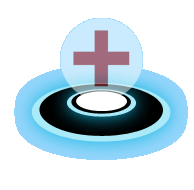|
Some injuries may require you to immobilize the affected limb.
By keeping the affected limb from moving it will help prevent further injury to the area.
|
Cravat Bandage
A cravat bandage is a triangular bandage or neckerchief that is folded by bringing the point to the middle of the base and then folding lengthwise to the desired width.
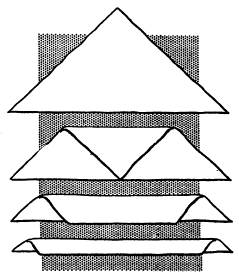
|
Fractures
A fracture is when a complete break, chip, or crack in the bone occurs.
There are two different types of fractures: open fracture and closed fracture.
- Open (compound) fracture:
The end of a bone tears through the skin, creating an open wound.
More dangerous because this injury carries a risk of infection and severe bleeding.
- Closed (simple) fracture:
Skin is not broken; more common than open fractures.
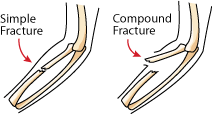
Treatment:
- Call 911 or the local emergency number.
- Follow RICE (Rest, Immobilize, Cold, Elevate).
- Rest: do not move or straighten the injured area.
- Immobilize: stabilize the injured area in the position it was found.
Splint the injured part only if the person must be moved or transported and if it does not cause more pain.
- Cold: apply ice or damp cloth to the injured area for periods of 20 minutes.
The cold will reduce internal bleeding, pain, and swelling.
- Elevate: raise the injured part only if it does not cause more pain.
The elevation may help reduce swelling.
|
Slings
A sling is used to support a splinted fracture.
A large triangular bandage or neckerchief can be used as a sling by tying an overhand knot (pig's tail) in the large angle of the triangle where the elbow will sit.
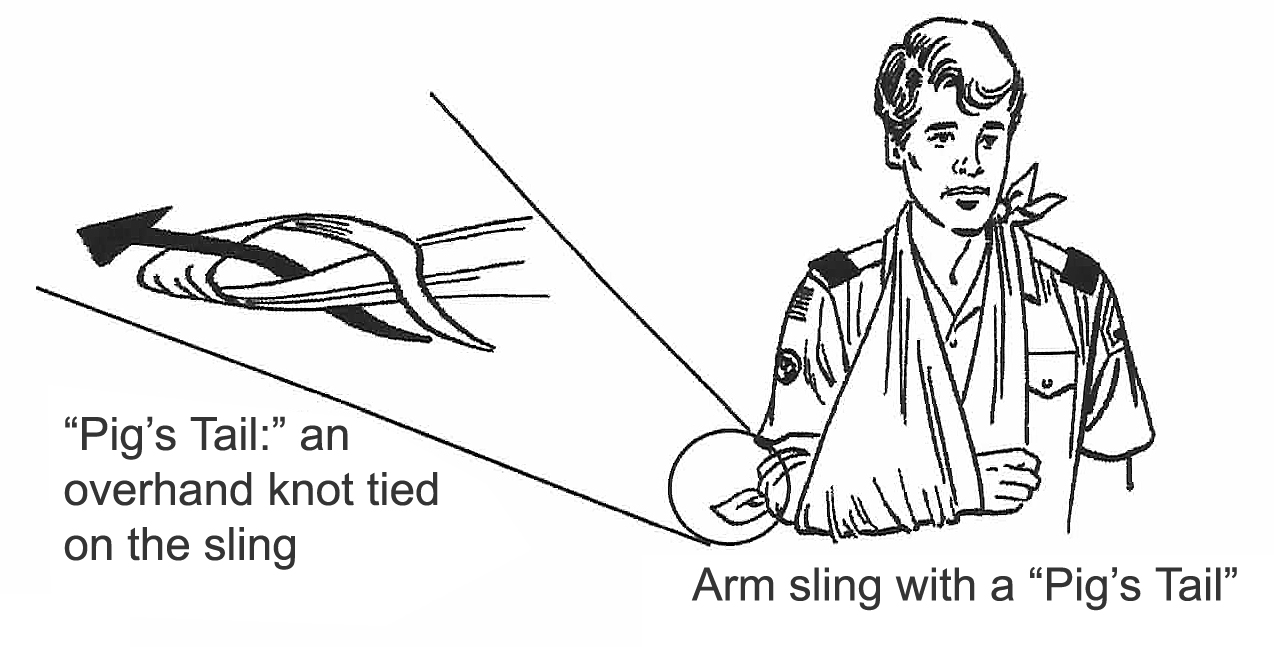
|
Splinting
A method of immobilizing an injured part to minimize movement.
This helps prevent further injury and should only be used if you have to move or transport the person and if it does not cause more pain.
The splint should be applied to the injury in the position it was found.
When splinting fractures, the splint should be applied to the joints above and below the site of the injury.
Materials used for splinting should be soft or padded for comfort.
After the splint has been applied, check for circulation to ensure the splinting is not too tight.
Splinting a Collarbone or Shoulder Fracture
Treatment:
- Call 911 or the local emergency number.
- Use a triangular bandage and place the forearm in a sling with the hand raised about three inches higher than the elbow.
- Tie the upper arm against the side of the body with a cravat bandage.
- Ensure that the bandage does not stop circulation in the arm.
Splinting a Lower-arm or Wrist Fracture
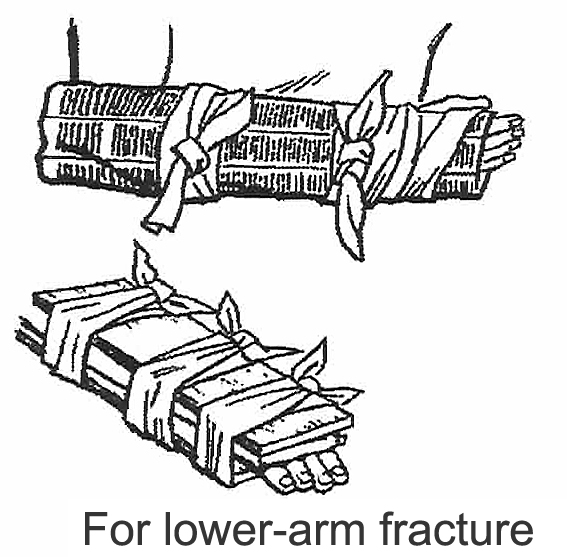
Treatment:
- Call 911 or the local emergency number.
- Use splints that are long enough to hold the wrist, lower arm, and elbow motionless.
- Place the splint in a sling with the thumb pointing up and the hand slightly higher than the elbow.
- Use a cravat bandage to tie the upper arm against the body.
Splinting a Lower-leg Fracture
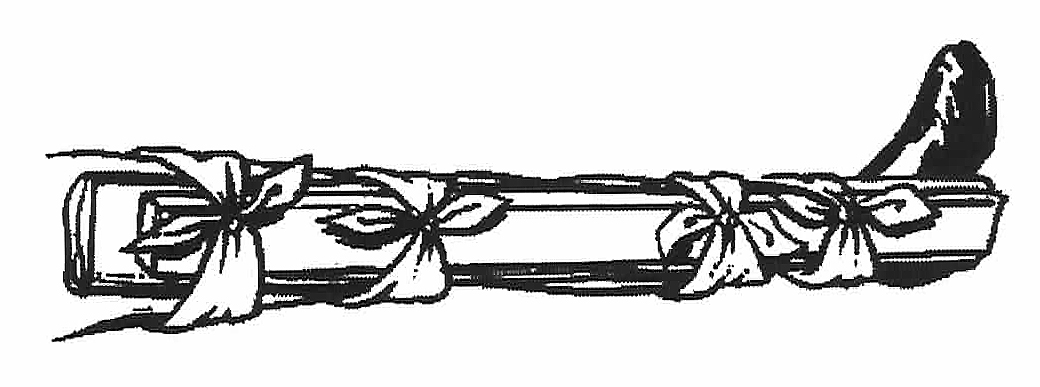
Treatment:
- Call 911 or the local emergency number.
- Apply two splints that are as long as the length of of the leg beginning from the middle of the thigh to a bit past the heel.
- Put the splints on each side of the injured leg and bind them together with four or more binders.
Splinting a Thigh Fracture
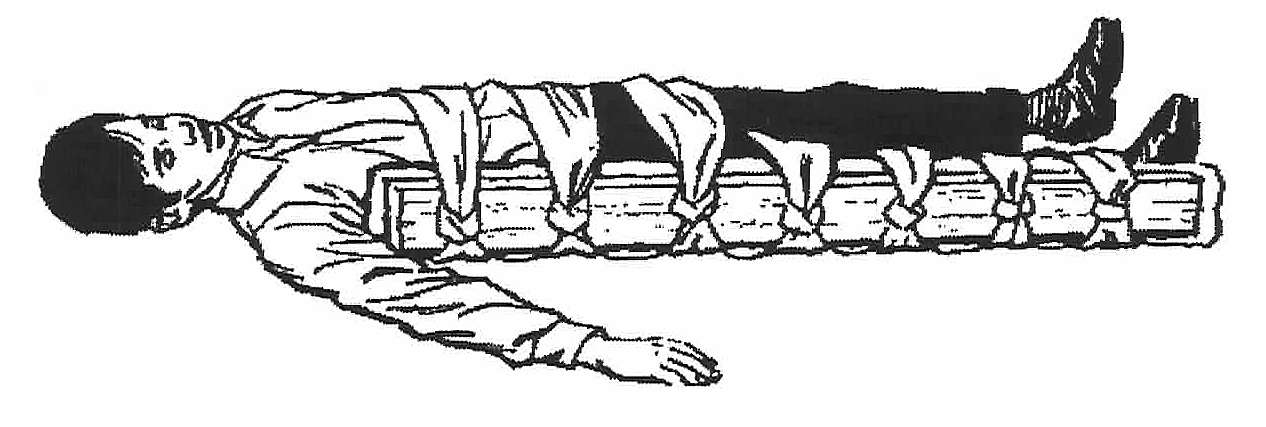
Treatment:
- Call 911 or the local emergency number.
- Use two splints, one for the outside of the leg extending from the heel to the armpit and one for the inside of the leg from the heel to the crotch.
- Bind the splints together with four binders around the splint and leg.
- Bind the splints together with three binders around the upper part of the outside splint and the body.
Splinting an Upper-arm Fracture
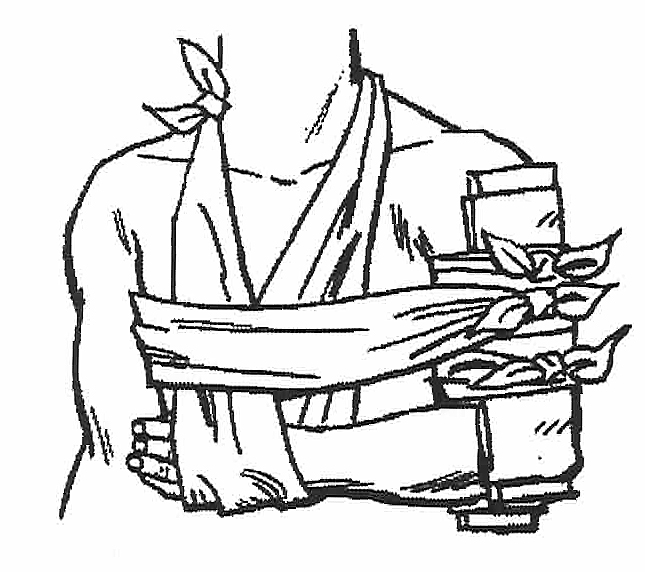
Treatment:
- Call 911 or the local emergency number.
- Tie a splint to the outside of the upper arm.
- Place the arm in a sling and use a cravat bandage to tie the arm against the side of the body.
|
Sprained Ankle
A sprain occurs when the ligaments at a joint is torn.
Mild sprains may swell but they will heal quickly.
If the person ignores the signals of swelling and pain, the joint will not heal properly and will remain weak; resulting in a good chance that it will become re-injured.
Treatment:
- Call 911 or the local emergency number.
- Do not remove the shoe.
It provides additional support for the sprained ankle.
- Tie a bandage around the shoe and injured ankle.
- If the foot is already bare, lie down and raise the leg.
- Reduce swelling with cold, wet towels.
|





